Trincomalee, a picturesque coastal town in Sri Lanka, has become a premier destination for scuba diving enthusiasts. Nestled along the turquoise waters of the Indian Ocean, this vibrant region boasts an array of underwater wonders that captivate divers from around the world. From exploring historic WWII shipwrecks to encountering magnificent marine life, Trincomalee offers an unparalleled diving experience that caters to adventurers of all skill levels. With guided excursions led by experienced instructors and the prime diving season from May to October, visitors can expect to witness the true beauty of this tropical paradise…
Good To Know
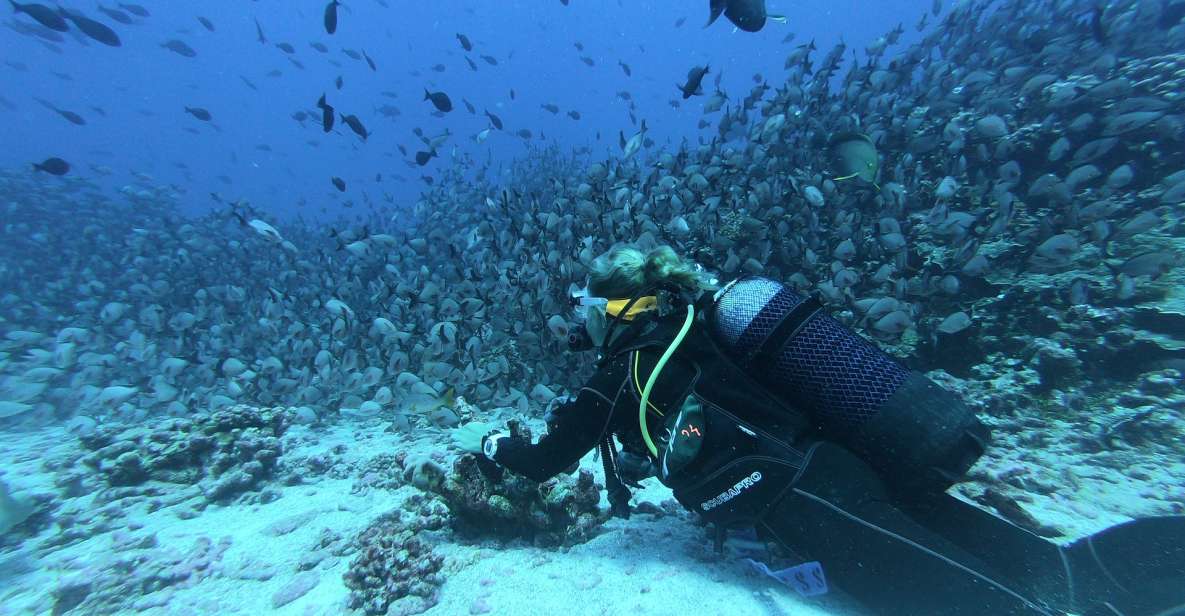
- Trincomalee offers a wide range of exceptional dive sites, including Swami Rock, Sitanampara, Pigeon Island, and Shark Point, renowned for their diverse marine life and historic shipwrecks.
- The prime diving season from May to October provides exceptional visibility, calm seas, and opportunities to spot manta rays, whale sharks, and dugongs.
- Experienced English and Sinhalese-speaking instructors provide expert guidance and tailored support for both beginners and experienced divers to ensure an immersive underwater experience.
- Private group diving experiences allow for customizable dive plans, exclusive access to premier locations, and an intimate environment that fosters confidence for novice divers.
- Proper safety and conduct guidelines, including the use of necessary equipment and attire, are strictly enforced to ensure a responsible and enjoyable diving adventure.
Overview of Scuba Diving Excursions
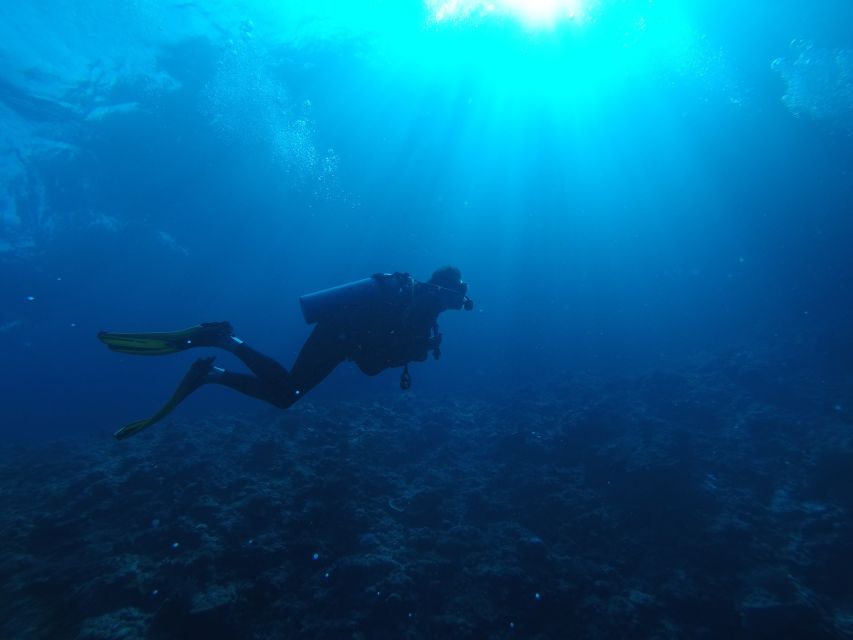
Scuba diving excursions in Trincomalee offer an unparalleled underwater adventure, with prices starting from just €111.36 per person for a 3-hour experience.
Visitors can enjoy free cancellation up to 24 hours in advance and reserve their spot with no upfront payment.
The excursions provide a chance to explore Trincomalee’s crystal-clear waters, dropping 1500m into the depths. Experienced English and Singhalese-speaking instructors guide guests through the vibrant reefs, underwater statues, and historic shipwrecks that dot the seabed.
With the peak season running from May to October, it’s the perfect time to discover the incredible marine life and natural wonders that make Trincomalee a top diving destination.
You can also read our reviews of more tours and experiences in Trincomalee.
Trincomalee’s Remarkable Dive Sites
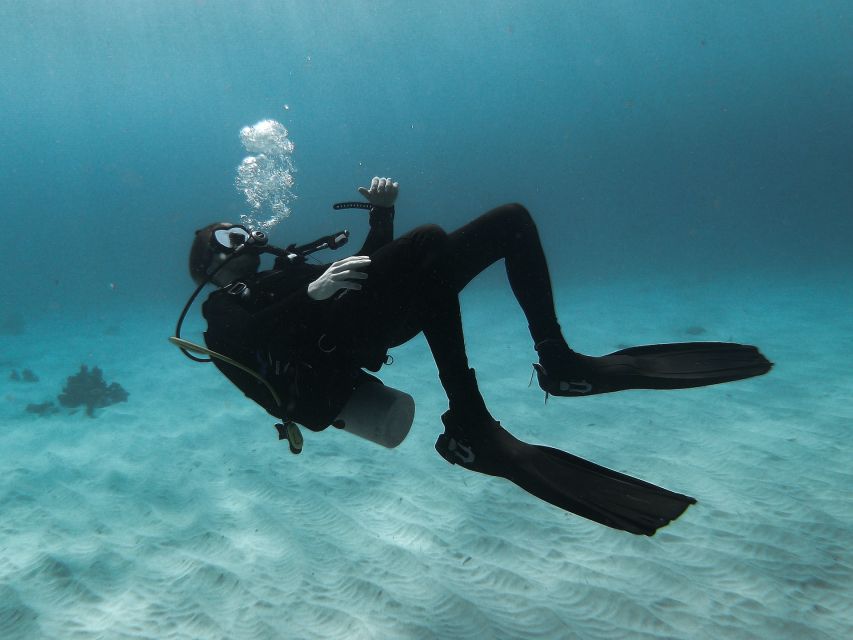
Trincomalee’s crystal-clear waters are home to a remarkable array of dive sites, each offering its own unique underwater treasures. From the towering Swami Rock to the intriguing Eel Rock, divers can explore a vibrant underwater world. The region boasts a rich history, with numerous historic shipwrecks, including World War II aircraft and Sri Lankan Navy vessels, waiting to be discovered.
| Dive Site | Depth (m) | Highlights |
|---|---|---|
| Swami Rock | 1500 | Largest natural harbor, colorful reefs |
| Sitanampara | 30 | Underwater statues, pinnacles |
| Pigeon Island | 15 | Diverse marine life, shipwrecks |
| Shark Point | 25 | Thrilling shark encounters |
Whether you’re a seasoned diver or a beginner, Trincomalee’s dive sites promise an unforgettable adventure beneath the waves.
Highlights of Underwater Attractions
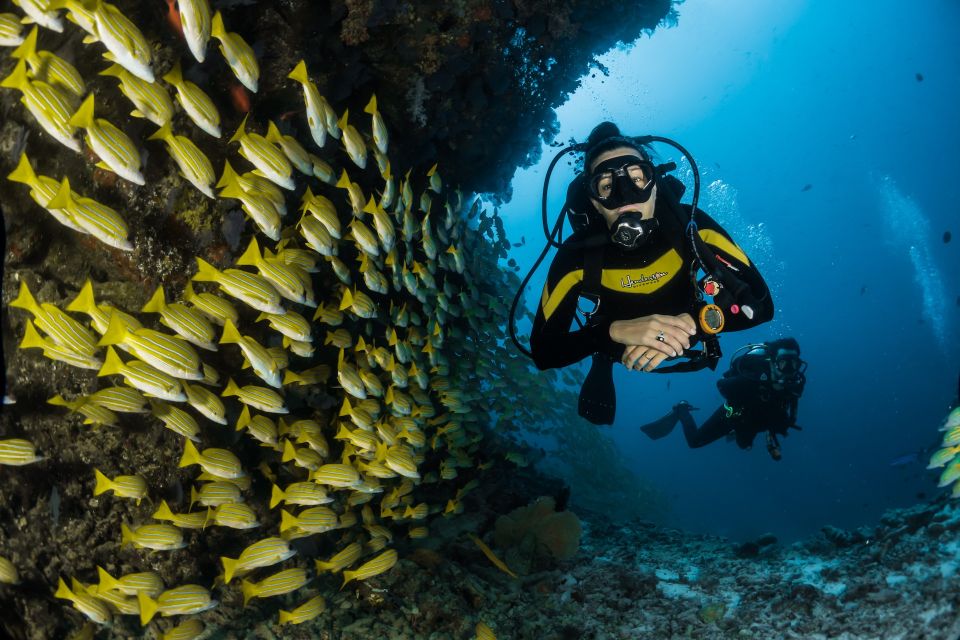
Countless underwater wonders await adventurous divers in Trincomalee. The region’s renowned dive sites teem with vibrant coral reefs, enchanting underwater statues, and majestic pinnacles.
Explore the wreckage of World War II aircraft, Sri Lankan Navy vessels, and even ancient Chinese gunboats, each offering a glimpse into the area’s rich maritime history. Encounter graceful schools of fish, playful marine life, and if you’re lucky, the occasional shark sighting.
The crystal-clear waters and dramatic drop-offs create a truly captivating underwater landscape. Trincomalee’s peak season from May to October promises an unforgettable scuba diving adventure, with expert instructors guiding you through this aquatic wonderland.
Timing and Seasonal Considerations
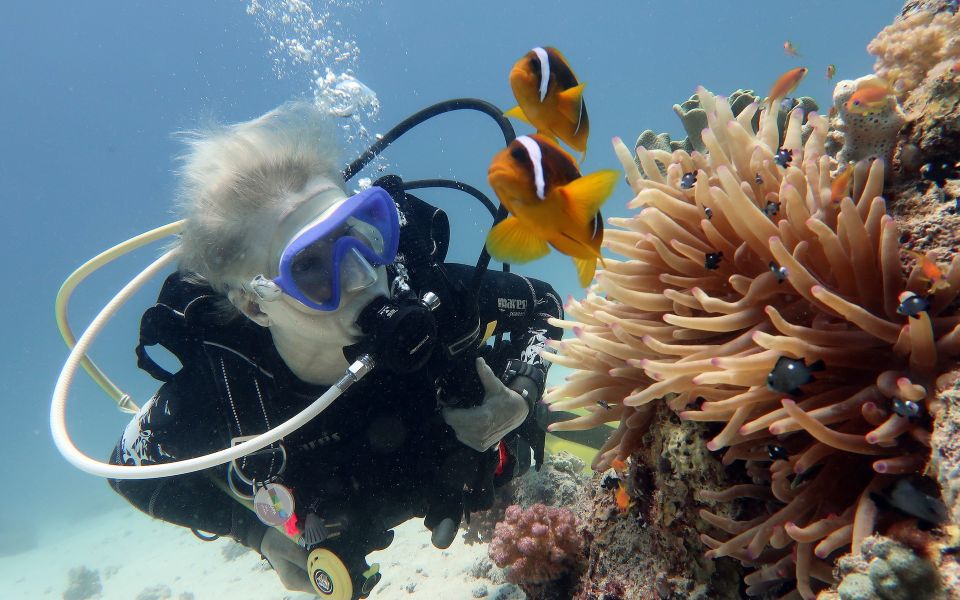
Situated along Sri Lanka’s northeast coast, Trincomalee beckons divers year-round, yet the prime season stretches from May to October.
This prime window offers exceptional visibility, calm seas, and a wealth of marine life.
Divers can expect to encounter:
- Vibrant coral reefs teeming with tropical fish
- Majestic schools of pelagic creatures like manta rays and whale sharks
- Intriguing shipwrecks from World War II and Sri Lanka’s naval history
- The opportunity to spot the elusive dugong, a gentle sea mammal found in the area
With its diverse underwater attractions and ideal seasonal conditions, Trincomalee is a premier destination for scuba enthusiasts seeking an unforgettable diving experience in Sri Lanka.
More Great Tours NearbyLanguage Support for Instructors
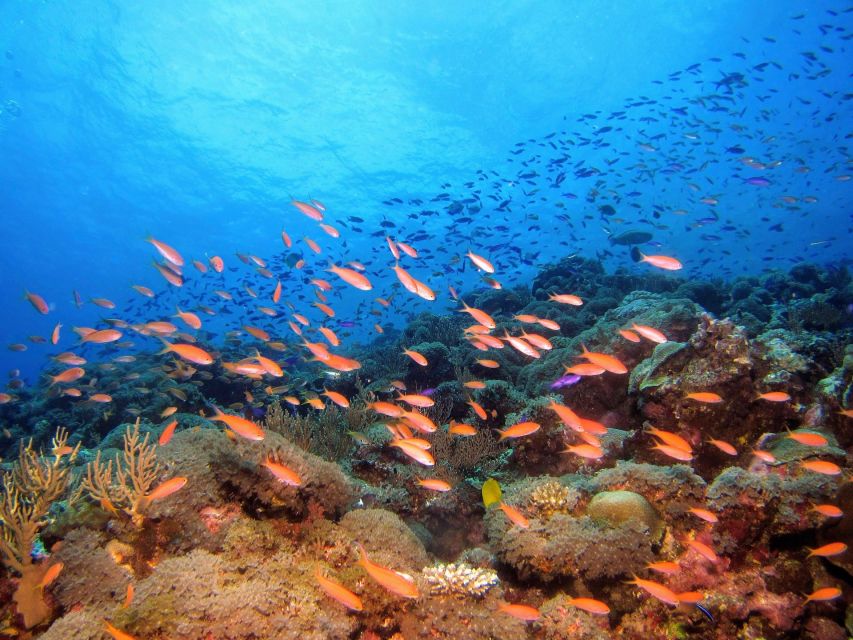
For the scuba diving experience in Trincomalee, instructors are well-equipped to guide divers in multiple languages.
Visitors can expect expert instruction in English and Sinhalese, the two official languages of Sri Lanka. This language support ensures a smooth and enjoyable diving experience for adventurers from all over the world.
Whether you’re a beginner or an experienced diver, the multilingual instructors will provide clear communication and tailored guidance to make your underwater exploration a success.
With their linguistic abilities, you can focus on enjoying the stunning marine life and historic wrecks that make Trincomalee a top diving destination.
Private Group Diving Experiences
Private group diving experiences in Trincomalee offer an exclusive and personalized way to explore the vibrant underwater world.
Groups can customize their dive plans, choose from premier dive sites, and enjoy undivided attention from experienced instructors.
Some highlights of a private group dive include:
- Tailored itinerary to match the group’s interests and skill levels.
- Opportunity to dive at premier locations like Pigeon Island and Shark Point.
- Intimate learning environment for novice divers to gain confidence.
- Flexible scheduling to accommodate the group’s timeline.
With stunning reefs, historic wrecks, and abundant marine life, a private group dive in Trincomalee promises an unforgettable adventure.
Necessary Equipment and Attire
Proper scuba attire and equipment are essential for a safe and enjoyable dive experience in Trincomalee’s vibrant underwater realm. Divers should come prepared with the necessary gear to explore the region’s stunning reefs, shipwrecks, and marine life. The table below outlines the recommended equipment and attire for a Trincomalee scuba adventure:
| Gear | Importance |
|---|---|
| Wetsuit | Protects from cold water temperatures |
| Mask, Snorkel, and Fins | Enhances visibility and mobility underwater |
| Regulator and Buoyancy Control Device | Allows for safe and controlled breathing and depth management |
| Dive Computer | Monitors depth, time, and decompression status |
| Underwater Camera | Captures unforgettable moments and memories |
With the right preparation, divers can enjoy Trincomalee’s underwater wonderland and create lasting experiences.
Important Safety and Conduct Guidelines
While the allure of Trincomalee’s underwater world is undeniable, scuba divers must adhere to strict safety and conduct guidelines to ensure a responsible and enjoyable experience.
Foremost, divers must refrain from littering or disturbing the fragile marine environment. Plus, the use of explosive substances is strictly prohibited. Pregnant women are also unable to participate, as the activity poses potential risks.
To further enhance the diving adventure, divers should:
- Respect the instructor’s guidance for optimal safety.
- Bring a change of clothes and swimwear.
- Embrace the diverse marine life and historic wrecks with care and wonder.
- Savor the peak diving season from May to October.
Frequently Asked Questions
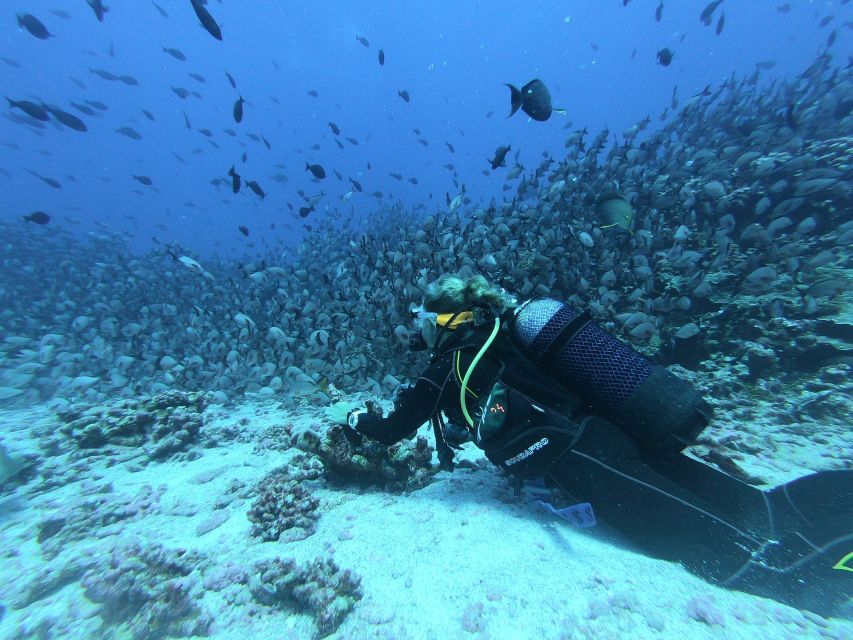
Can I Obtain Scuba Diving Certification in Trincomalee?
Yes, you can obtain scuba diving certification in Trincomalee. The area offers various dive sites with colorful reefs, underwater statues, and historic wrecks, making it an excellent location for beginner and experienced divers to get certified.
What Is the Maximum Depth for Recreational Scuba Diving in Trincomalee?
The maximum depth for recreational scuba diving in Trincomalee is typically 40 meters (130 feet). This depth limit ensures divers’ safety and allows them to explore the area’s remarkable underwater landscapes and historic wrecks while adhering to industry standards.
Are There Any Age Restrictions for Scuba Diving in Trincomalee?
There are typically no age restrictions for scuba diving in Trincomalee, though operators may have their own policies. Most accept children as young as 10 with parental supervision. It’s an exhilarating way to explore the area’s vibrant marine life.
Can I Bring My Own Scuba Diving Equipment to Trincomalee?
While you can bring your own scuba gear, it’s generally not recommended. The tour package includes high-quality, well-maintained equipment, and using the provided gear ensures your safety and maximizes your diving experience in Trincomalee’s stunning underwater world.
Are There Any Medical Requirements for Scuba Diving in Trincomalee?
There are some medical requirements for scuba diving in Trincomalee. Pregnant women aren’t allowed to dive, and participants must be in good health without any conditions that could be exacerbated by the pressure of diving.
The Sum Up
Trincomalee’s scuba diving excursions offer an unparalleled adventure, immersing visitors in a vibrant underwater world. From historic shipwrecks to captivating coral reefs, divers of all levels can explore a diverse array of marine life in optimal conditions. With knowledgeable instructors and exceptional seasonal visibility, it’s an ideal destination to create unforgettable memories while respecting the delicate ecosystem.
You can check availability for your dates here:More Scuba Diving Tours in Trincomalee
More Tour Reviews in Trincomalee
- Trincomalee : Whale & dolphin watching +pigeon island tour
- Trincomalee: City Tour with Koneswarm and Crocodile lake
- Trincomalee: Chocolate Cake Order with Delivery (1-kg)
- Trincomalee: Tuk-Tuk city tour with a guide
- Trincomalee: Private Photoshoot with a Professional.
- Trincomalee: Guided scooter City Tour
Not for you? Here's more nearby things to do in Trincomalee we have reviewed
- Trincomalee : Whale & dolphin watching +pigeon island tour
- Trincomalee: City Tour with Koneswarm and Crocodile lake
- Trincomalee: Chocolate Cake Order with Delivery (1-kg)
- Trincomalee: Tuk-Tuk city tour with a guide
- Trincomalee: Private Photoshoot with a Professional.
- Trincomalee: Guided scooter City Tour
- Trincomalee: Whale & Dolphin Safari Tour with Expert Guides
- Trincomalee: 3-Day Luxury Escape with Whale Watching
- Trincomalee : pigeon island tour + snorkeling
- Surf Skiing in Trincomalee
- Tube Riding in Trincomalee
- Wakeboarding in Trincomalee
